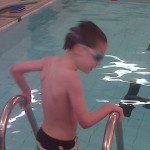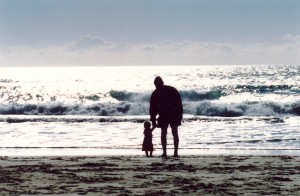
Swimming as OT for autism
Before I start the blog post proper I want to get something off my chest.
As readers of this blog know, our seven year old now attends a ResourceBase rather than a mainstream school to access learning. One of the key reasons from our point of view was that his old mainstream school was not able to provide him with the Occupation Therapy (OT) which, according to government and healthcare officials, he needs. The ResourceBase would be able to meet these requirements or so we were told.
Well, on Tuesday we met with his various teachers at the new school and were rather surprised to be told that he had received no formal OT that term. The reason was that even with daily phone calls from the school the relevant authorities had not provided one until that week. Even then this OT support would end with the current semester.
So not exactly what we bargained for. I have to say I’m a bit troubled that even the school have asked us to complain to the relevant local government department. Which I fear will give them more chance to prevaricate and not deliver what they have agreed to. Out of interest, do you have similar issues with statutory funding/support for children with special needs where you live? If so please add your thoughts in the comments box below.
Not to say that our son gets no OT support. The teaching staff and my wife and I provide as much as we can but none of us is an OT professional and I’m concerned our son may lose out. For John OT is particularly important because of his handwriting and concentration issues.
The main theme of this blog is not a whine, in fact. It is much more about what we can actually do with John.
While both we and the school do OT exercises such as the wheel barrow, his main love is swimming. It is great for both co-ordination and self-esteem.
Originally we just used to take him to our local pool each week or so. But when he went to his new school we decided that he would benefit from proper swimming lessons. As luck would have it, only ten minutes’ walk, from his new unit there is a swimming school which provides special needs swimming lessons. (At a discount as well). Due to his autism he has a one-to-one session rather than learning in a group situation. Which is sort of a shame but necessary in our son’s case.
Here I’d like to pay tribute to Keith, John’s teacher. Not just can he put up with our son, he demonstrates the patience of Job. Indeed they were introduced when John was having a full scale melt down but around five minutes later he was in the pool immersed (in both senses) in his lesson.
As a point of information Keith uses John’s interest in space and science fiction to provide an imaginary framework for the lessons. So a take away for other autistic parents who want their child to learn something like swimming is to use the childs special interests as a way of getting them to embrace the activity.
Obviously for any autistic child progress is not as straight forward as we would like but in eight weeks real strides have been made. He has moved from the doggy paddle to nearly being able to crawl and do the back stroke.
That being said I’m interested to know where we go from here and your advice would be much appreciated. For example I’m very interested in the following questions:-
- Does your child do any sporting activity?
- How do you encourage them to participate in team as well as individual sports?
- What sort of OT support does your child receive?
- What difference has exercise and sport made to your child?
Thanks very much in advance
PS I have to say Keith is a marvel and I have every intention of getting him a bottle of Bunderburg Rum for Christmas by way of thanks.




